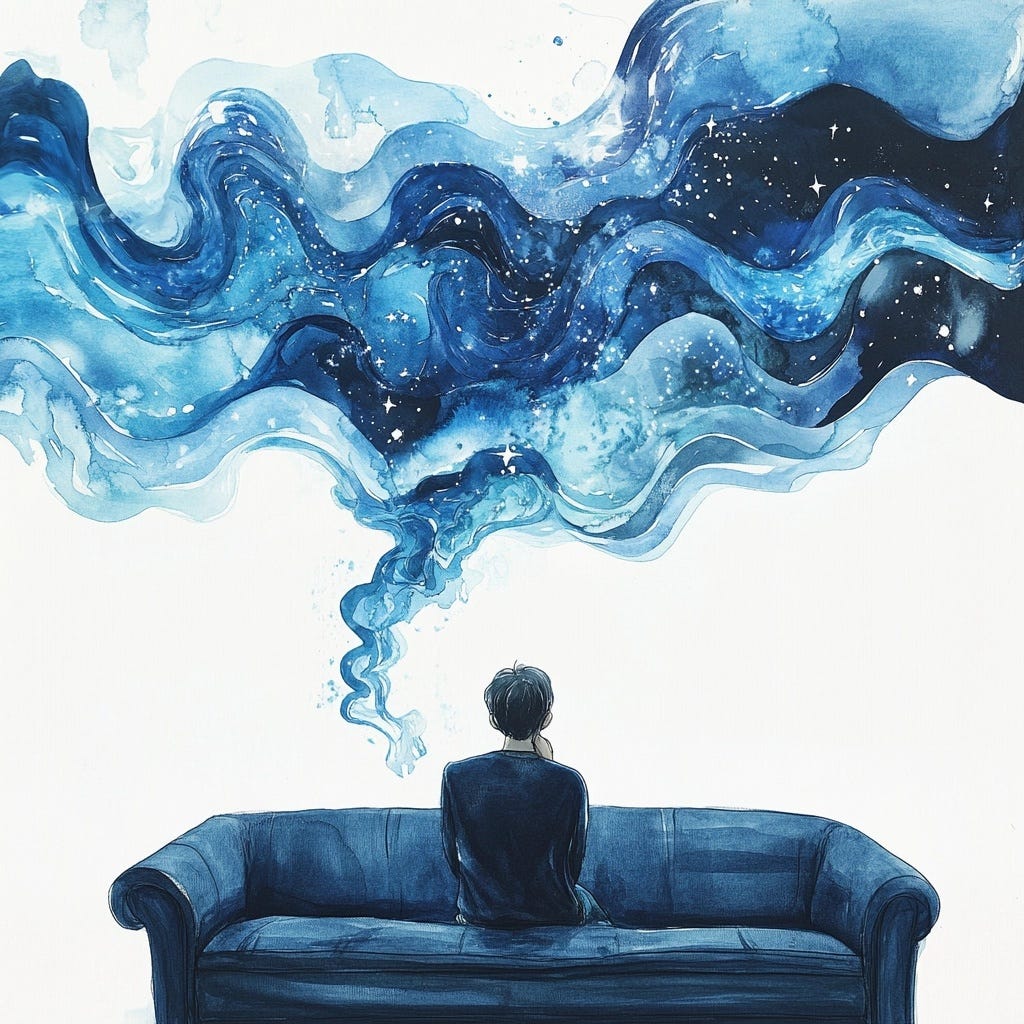A few weeks ago, I reflected on a shift in photography: once, it sought to capture the visible, to hold it still. Now, in our age of filters, it aims to transform what it sees. But today, as reality itself wavers, another pursuit arises—not to seize what is seen, but to reveal what escapes the eye. In the cracks of the tangible, where the unseen stirs, where intuition begins to take shape.
Take the Poetry Camera, for instance, which turns every photo into a poem, or the Soft app, designed to capture the rhythm of your surroundings and transform each image into a living piece of art. Then there’s Paragraphica, powered by generative AI, which listens to the whispers of a place through its data, translating them first into words and then into images—revealing an entirely new dimension of reality.
Today, I want to build on these ideas by sharing a fascinating concept from Jean-Yves Le Moine: “cognitive cinema.” This vision could mark a new chapter in how we engage with images and storytelling, reimagining our connection to reality—and to ourselves.
The art of moving images
Photography gave us the still image—a frozen window onto the world. Cinema, on the other hand, brought movement: a sequence of images flowing together to simulate reality.
At the first screening of The Arrival of a Train at La Ciotat Station, audiences were astonished. They leaned back in their seats, convinced the locomotive would burst from the screen and crash into them. It was a revolutionary moment—illusion made real, almost tangible.
Over time, however, this raw magic began to fade. Cinema evolved into an artifice. The screen felt further away, and viewers grew accustomed to the gap between themselves and the image. To restore that sense of immersion, filmmakers turned to spectacle: special effects, hyper-realistic explosions, and 3D imagery. Immersive technologies like VR headsets and goggles promised to bring audiences “into” the image. But for all their potential, these tools often fall short, unable to transcend their own mechanics, leaving the essence of true immersion tantalizingly out of reach.
I remember my first experience with a VR headset: the towering peaks stretched endlessly before me. Yet, once I took off the headset, a strange emptiness lingered. The experience, as striking as it was, felt disconnected—it didn’t truly belong to me. It was like being thrust into a spectacular world without ever being able to truly inhabit it. So, how do we cross that boundary?
What’s next?
If we cannot bring the viewer fully into the image, why not let the image settle within them instead? Emerging technologies are already exploring this path—neural implants, devices capable of generating experiences directly in the brain. But must we go that far? Perhaps the future lies elsewhere.
This is where cognitive cinema comes in. Here, images are no longer projected onto a screen or created by external devices. Instead, they are born within the viewer’s mind, guided by a narrative that stimulates the imagination. The story becomes a unique co-creation, a dialogue between the proposed narrative and the viewer’s inner world.
As Jean-Yves Le Moine explains: “With text2reality, the viewer no longer just watches a film—they live it, literally. They’re no longer spectators of dreams crafted by others but creators of their own dreams, which they experience while awake (text2dream). Looking ahead, when AI becomes quantum, these dreams might even influence our tangible perceptions of reality (text2life).”
In this vision, reality would no longer be something we merely experience—it would be something we transform, reinterpret, and shape according to our desires. It would no longer be a passive experience but a malleable space where imagination becomes a tool—a fertile ground for creating one’s own world.
This idea resonates deeply with my reflections on what I call selfpressionism, the defining artistic movement of the 21st century. Once, our ancestors ventured toward distant, foreign lands. Today, the vast, uncharted horizons are within us. As Albert Dupontel aptly put it: “The goal is not to make cinema, but to create one's cinema.” And soon, cinema will no longer be something we simply watch on a screen—it will be lived, felt, and deeply personal.
MD
Jean-Yves Le Moine, an engineer by training, has made a name for himself in the creative industries as a director and producer, integrating the latest visual innovations into international projects. Now the co-founder of HUMAN2AI, he specializes in AI workflows and offers solutions that combine cutting-edge technology with human creativity. To stay updated on his work: http://human2ai.substack.com






Excellent ideas Marie.
One naive question though so that I can see things as you did:
What's the exact difference between "images are no longer projected onto a screen or created by external devices. Instead, they are born within the viewer’s mind, guided by a narrative that stimulates the imagination. The story becomes a unique co-creation, a dialogue between the proposed narrative and the viewer’s inner world" and reading a book? Because if you hadn't mentioned Cognitive Cinema I would have said that what you describe is the exact experience I have when reading a book.